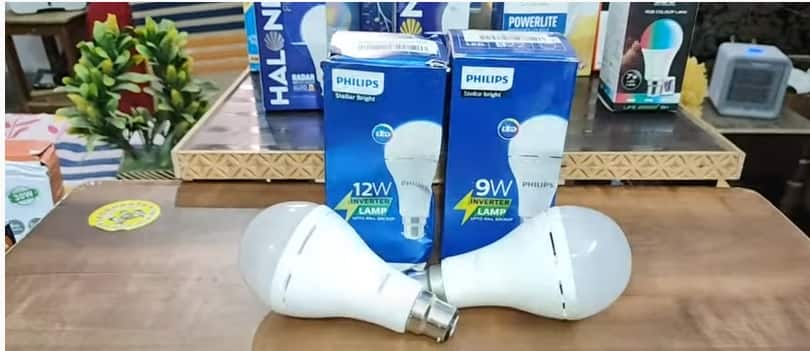
The purchase of LED bulbs is normally not given much significance. The purchase by most consumers is done on the basis of the lower initial cost of purchase. Neither the consumer knows the reason for the price difference nor the shopkeeper is aware of the reason for the price difference.
So, what are the factors that should be considered while purchasing LED Bulbs? How to know which bulb is better? What is the difference between the two bulbs? Why there is a difference between the two bulbs of the same capacity?
Let’s find the answer to the above questions here. The difference in the output of two different LED bulb can be summarized under the following two heads:
01. Financial Differences between LED Bulbs:
02. Non-Financial Differences between LED Bulbs
Financial Differences between LED Bulbs:
Under this head comes the following four points:
- The wattage consumption of the cheaper bulbs is usually higher.
- The expected life span of the cheaper bulb is lower.
- The failure rate of cheaper bulbs is higher.
- The maintenance costs of the lower bulb are higher.
The first important point to note here is compare the two bulbs on the basis of equal lumen and not the equal wattage.
Why?
Because, we are concerned with the brightness of the bulb and not the consumption of the power.
Lumen measures the brightness of the bulb and wattage measures the energy consumed by the bulb. Inefficient bulbs will consume more wattage and give less lumen.
Comparing two LED bulbs is quite easy, the inputs required are fairly simple. You will get the required data in the product specifications. The easiest way to get this is to ask the product leaflet from the shopkeeper or search product specifications on the net.
You only require two inputs from the specifications:
01. Product wattage and
02. the expected life of the LED bulb.
Sometimes, instead of giving the Wattage only the efficacy of the bulb is mentioned, then you can find the Lumen output by using the following formula:
Lumen Output = Wattage of the bulb x Efficacy
Note: Sometimes in the product leaflet you will not find the expected life, or the Lumen output of the bulb. In most likelihood then the bulb is of cheaper quality and hence the data has been ignored.
The following formulas can be used to compare the costs of the two bulbs:
Equation 1: To find the expected life of the bulb
Life of the Bulb in years = Average Life of the Bulb/(Hourly usage per day x 365)
Equation 2: To find the annual cost of the bulb
Annual cost of the bulb = Cost of the bulb/Expected life of the bulb from above equation I.
Equation 3: To find the Annual Running Cost of the bulb
Yearly running cost of the bulb = (Avg. Usage per Day x Bulb Wattage x Electricity Tariff per unit x 365) /1000 + Annual Maintenance Cost
Equation 4: To find the total Annual Cost of the Bulb
Total Annual Cost = Annual Cost of Bulb(from Eq.2) + Annual running Cost (from Eq.3)
Example
We are explaining the above with the help of the example below:
Assumptions:
Average Hrs. of Bulb running 8 Hrs. a day
Electricity tariff: Rs. 6.5/Kwh,
Bulb A, costing Rs. 2000, of 3600 Lumen, 30 W and expected life cycle of 50000 Hrs.
Bulb B, costing Rs. 1500, Consuming 36 W with the expected life cycle of 35000 Hrs.
The total annual cost of each bulb will be as follows:
Bulb A
Equation 1: Life of Bulb= 50000/(8 x 365) = 17.12 Years
Equation 2: Annual cost of Bulb = 2000/17.12 = Rs. 116.82
Equation 3: Yearly running cost of Bulb = (8 x 30 x Rs. 6.5 x 365)/1000 = Rs. 569.40
Equation 4: Total Annual Cost = 116.82 + 569.40 = Rs.686.22
Bulb B
Equation 1: Life of Bulb = 35000/(8 x 35) = 11.99 Years
Equation 2: Annual Cost of Bulb = 1500/11.99 = Rs. 125.10
Equation 3: Yearly running cost of Bulb = (8 x 36 x Rs. 6.5 x 365)/1000 = Rs. 683.28
Equation 4: Total Annual Cost = 125.1 + 683.28 = Rs. 808.38
So the savings will be =Rs. 808.38 – Rs. 686.22 = Rs. 122.16 /year of use from Bulb A
Other Non- Financial Differences between LED Bulbs:
Apart from the financial gains, the following differences are also worth observing:
A. With power failures being common and the user having an alternative source of backup like a Solar Plant, Inverter or Generator this difference in wattage makes a significant difference in backup costs and hours of backup available.
B. Apart from the above, the following differences are worth noting which arise due to the use of cheaper quality LED Chip, LED Driver, Heat Sink, Quality of Phosphor, and capacitors used in Power supply:
- The lumen output ( the brightness of the bulb) of the cheaper bulb is likely to reduce at a faster rate with the passage of time.
- The color frequency of the light will not be consistent in all the products due to the low quality of phosphor used.
- The power supply will reliability will decrease due to the lower quality of capacitors used.
Due to the above reasons it is advisable to always go for a better quality of LED Bulb. It saves on cost, it reduces the headache and it also gives better results. We hope now after reading this article, you have more clarity why the cheaper quality turns out to be costlier in the long run.

